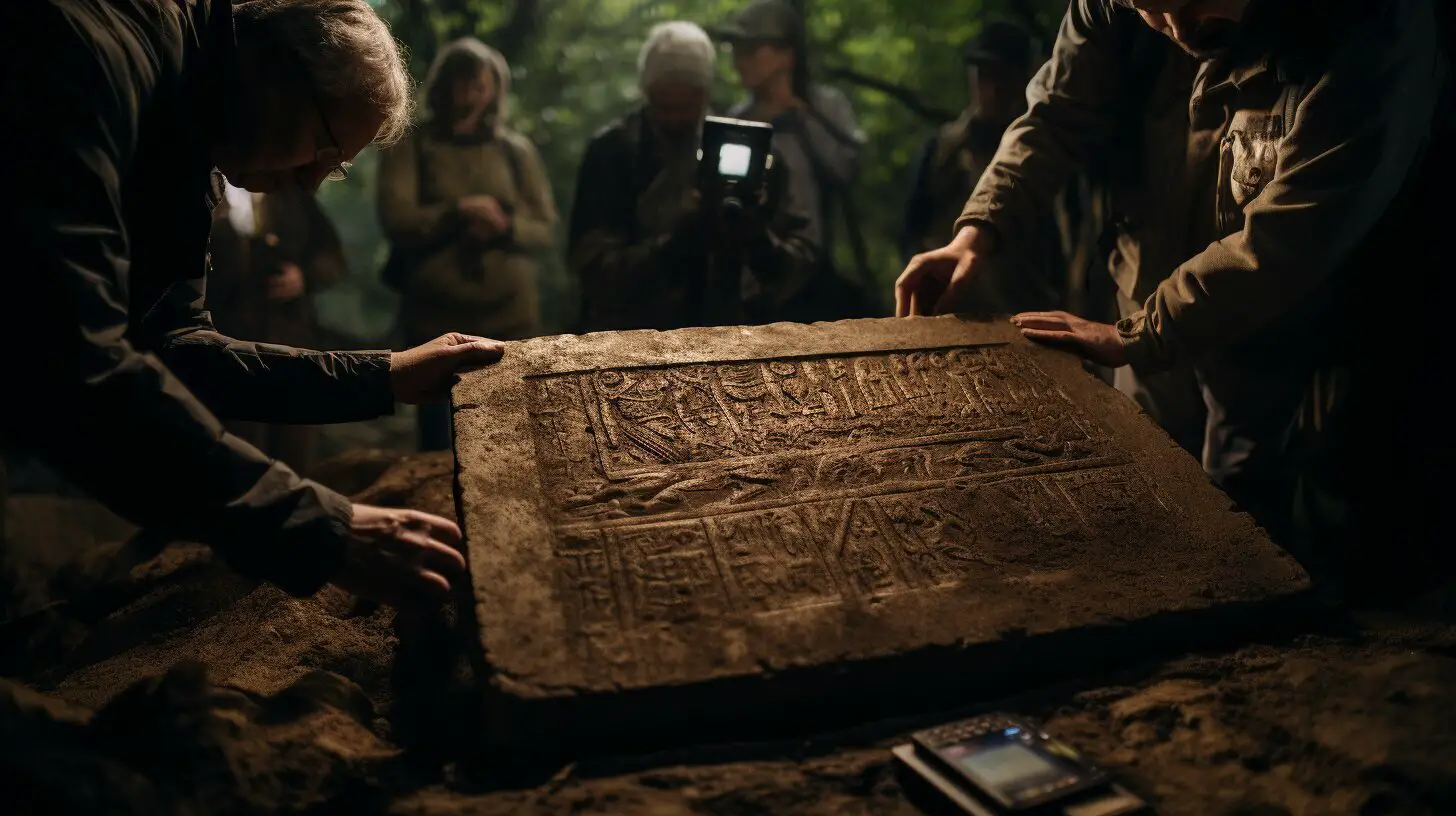Biblical archaeology is a captivating field that sheds light on the world of the Bible. Archaeological discoveries provide valuable insights into the cultural and historical context of the Bible, enabling us to better understand these ancient texts. Through the excavation of biblical sites and examination of biblical artifacts, we can explore stories and events that took place millennia ago.
In this article, we will delve into the richness of biblical archaeology and discuss the ongoing research and discoveries that continue to enhance our understanding of the biblical world. We will explore notable archaeological finds, journey to biblical archaeology sites, and highlight the advancements made in biblical archaeology research.
The Richness of Biblical Archaeology
Biblical archaeology continues to unravel the mysteries of the past and provide valuable insights into biblical narratives. From pottery to inscriptions, these archaeological discoveries have enriched our understanding of the historical accuracy and cultural context of the Bible.
Ongoing archaeological research and discoveries further emphasize the significance of biblical archaeology in validating the authenticity of the biblical narratives. Scholars and experts have been able to use these discoveries to further examine and analyze the biblical world.
The richness of biblical archaeology lies in its ability to shed light on the past and provide new perspectives on ancient biblical texts. Through meticulous archaeological research and interpretation, we continue to uncover the fascinating and invaluable artifacts that shape our understanding of the Bible.
Ancient Discoveries: Unearthing Biblical Artifacts
Biblical archaeology has brought to light a plethora of fascinating artifacts that provide valuable insights into the biblical world. These artifacts range from ancient scrolls and pottery to coins and inscriptions. The meticulous archaeological research that goes into unearthing and interpreting these artifacts is crucial in understanding and preserving the history of the Bible.
| Artifact | Significance |
|---|---|
| Dead Sea Scrolls | The Dead Sea Scrolls, discovered in the mid-twentieth century, contain some of the earliest known copies of the Hebrew Bible. They have provided scholars with new insights into the development of the biblical text and the beliefs and practices of the people who wrote them. |
| Tel Dan Stele | This ancient inscription, discovered in northern Israel in 1993, is dated to the ninth century BCE and contains the earliest known reference to the House of David outside of the biblical text. It provides evidence for the existence of the Davidic dynasty. |
| Samaria Ostraca | These inscriptions, discovered in Samaria in the early twentieth century, provide insight into the daily life and commerce of Samaria during the eighth century BCE. They include letters and receipts for goods exchanged within the city. |
These artifacts, and many others like them, offer a glimpse into the cultural and historical context of the biblical world. They provide tangible evidence of the people, places, and events described in the Bible and help to validate the authenticity of the biblical narratives.
As archaeological research continues, there is no doubt that more fascinating artifacts will be unearthed. Each discovery adds to our understanding of the biblical world and brings us closer to unraveling the mysteries of the past.
Journey to Biblical Archaeology Sites
Embark on a journey to some of the most renowned biblical archaeology sites around the world. From the Holy Land to Egypt and beyond, these sites offer a glimpse into the historical and cultural context of biblical events and figures.
1. Jerusalem
Jerusalem is steeped in biblical history, with numerous archaeological sites associated with important events and figures. The City of David, for example, is believed to have been the original location of King David’s palace and provides valuable insights into ancient Israelite history. The Western Wall, the most sacred site in Judaism, is also a popular archaeological destination.
2. The Dead Sea Scrolls Caves
The Dead Sea Scrolls, discovered in the 1940s and 50s, are some of the most significant biblical artifacts ever found. They were discovered in caves along the Dead Sea, and today these caves are open to visitors who can explore the sites where these ancient texts were discovered.
3. Luxor, Egypt
Luxor, located on the banks of the Nile River in Egypt, is home to numerous biblical archaeology sites, including the Temple of Luxor, which dates back to the 14th century BC. The city was also the location of the ancient city of Thebes, which is mentioned in the Bible as the site of a battle between God’s people and the Egyptians.
4. Babylon, Iraq
Babylon, located in modern-day Iraq, is one of the most famous biblical cities, mentioned frequently in the Old Testament. Archaeological excavations have uncovered numerous artifacts and structures, including the famous Ishtar Gate and the Hanging Gardens of Babylon, which are considered one of the Seven Wonders of the Ancient World.
5. Petra, Jordan
Petra, located in southern Jordan, is an ancient city carved into rock that dates back to the 6th century BC. While Petra is not mentioned directly in the Bible, it was located along important trade routes and was likely visited by biblical figures such as Abraham and Moses. Today, visitors can explore the ancient city and marvel at its stunning architecture.
These are just a few of the many biblical archaeology sites around the world that offer valuable insights into the history and culture of the biblical world. Whether you are a history buff or a biblical scholar, these sites are sure to ignite your curiosity and imagination.
Unveiling the Evidence: Insights from Biblical Archaeology
Biblical archaeology has contributed significantly to our understanding of the cultural, political, and social aspects of biblical times. Through meticulous archaeological research, valuable evidence has been uncovered that sheds light on the world in which the Bible was written.
One such discovery is the Tel Dan Stele, a stone slab discovered in northern Israel in 1993. The inscriptions on the slab provide the first outside reference to the “house of David”, validating the biblical account of King David’s reign. This finding confirms that David was indeed a historical figure, and not just a legendary hero.
Another notable discovery is the Dead Sea Scrolls, a collection of Jewish texts dating back to the Second Temple period (530 BCE to 70 CE). These parchments include the earliest known copies of parts of the Hebrew Bible, shedding new light on the development of the biblical canon.
Excavations at the ancient city of Jericho have also provided valuable insights into biblical times. Through the discovery of pottery and other artifacts, archaeologists have been able to reconstruct the city’s social structure, economy, and religion.
The Role of Biblical Archaeology in Challenging Assumptions
Biblical archaeology has also challenged long-held assumptions about biblical stories and characters. For example, excavations at Tell es-Safi in Israel have revealed that the Philistines, often depicted as barbaric enemies of the Israelites, were actually sophisticated and technologically advanced. This finding challenges the simplistic view of the Philistines as uncivilized foes in the biblical narratives.
Similarly, excavations at the ancient city of Bethsaida have brought a new understanding of the character of Peter, one of Jesus’ disciples. Traditionally depicted as a fisherman from Galilee, the archaeological evidence suggests that Peter was actually a wealthy landowner and influential member of society.
Implications for Biblical Studies
The evidence uncovered through biblical archaeology has significant implications for biblical studies. It provides valuable historical context for biblical events and characters, enabling scholars to better understand the development of biblical texts.
For example, the discovery of the Dead Sea Scrolls has led scholars to reconsider the origins of the Hebrew Bible. It suggests that the biblical canon was not fixed, but rather, evolved over time as different texts were added and removed.
The discoveries at Jericho have also shed new light on the story of Joshua and the conquest of Canaan. While the archaeological evidence does not align precisely with the biblical account, it does provide a broader understanding of the social, economic, and religious context in which the story is set.
In conclusion, the evidence uncovered through biblical archaeology provides important insights into the biblical world and challenges assumptions about biblical stories and characters. By continuing to engage with the field of biblical archaeology, we can gain a deeper understanding of the world in which the Bible was written and the people who lived during that time.
Advancements in Biblical Archaeology Research
Biblical archaeology research has come a long way since the early days of excavation. Thanks to the use of cutting-edge technology, archaeologists are now able to gain deeper insights into the biblical world.
One of the most significant advances in biblical archaeology research has been the use of satellite imaging. This technology has enabled archaeologists to map out ancient sites with an unprecedented level of accuracy. By analyzing satellite images, researchers can identify features that may not be visible on the ground, such as buried structures and ancient roads.
Another important technological advancement in biblical archaeology research is the use of DNA analysis. By analyzing DNA samples from ancient bones and artifacts, researchers can gain insights into the genetic makeup and lifestyles of ancient populations. This information can help to validate or refute biblical narratives and shed light on the social and cultural context of biblical times.
Interdisciplinary Collaborations
In addition to technological advancements, interdisciplinary collaborations have also played a significant role in advancing our understanding of the biblical world. By bringing together experts from a variety of fields, including archaeology, history, and theology, researchers are able to explore biblical narratives from multiple perspectives.
For example, researchers may use archaeological evidence to support or challenge historical accounts of biblical events. They may also draw on theological insights to explore the deeper meaning and significance of biblical texts.
Challenges and Opportunities
Despite these advancements, biblical archaeology research continues to face challenges. One of the biggest challenges is the preservation and interpretation of artifacts. Archaeologists must take great care to preserve artifacts in their original condition and to ensure that they are interpreted accurately.
Nevertheless, the ongoing work of biblical archaeologists presents many exciting opportunities for research and discovery. As new technologies and techniques are developed, we can expect to gain even deeper insights into the biblical world and its relevance to our lives today.
Discovering the Past through Biblical Archaeology
In conclusion, biblical archaeology continues to be a vital field in unlocking the mysteries of the past. Through archaeological discoveries, we gain new insights into ancient biblical texts and the world in which they were written. From unearthing biblical artifacts to exploring ancient sites, we have the opportunity to learn more about the historical accuracy and cultural context of biblical events.
The significance of meticulous archaeological research cannot be overstated, as it allows us to preserve and interpret these artifacts and gain a better understanding of the past. Moreover, advancements in technology and interdisciplinary collaborations are enhancing biblical archaeology research methods and providing new opportunities to gain deeper insights into the biblical world.
As we continue to explore and engage with the field of biblical archaeology, we can expect to uncover even more evidence that will enhance our understanding of the past. We encourage readers to stay up-to-date with the latest biblical archaeological discoveries and to participate in this exciting field of study.
FAQ
Q: What is biblical archaeology?
A: Biblical archaeology is a field of study that focuses on excavating and researching archaeological sites and artifacts related to the biblical world. It aims to uncover evidence that provides insights into the historical accuracy and cultural context of biblical events.
Q: Why is biblical archaeology significant?
A: Biblical archaeology is significant because it validates the authenticity of the biblical narratives. Through archaeological discoveries, we can gain a better understanding of the people, places, and events mentioned in the Bible, helping us to piece together the puzzle of the past.
Q: What are biblical artifacts?
A: Biblical artifacts are objects that have been unearthed through archaeological excavations and are associated with the biblical world. These artifacts can include ancient scrolls, coins, pottery, inscriptions, and other items that provide valuable insights into the lives of ancient civilizations.
Q: What are some famous biblical archaeology sites?
A: There are numerous biblical archaeology sites around the world. Some famous ones include Jerusalem in the Holy Land, Egypt’s Valley of the Kings, ancient cities like Babylon and Nineveh in Mesopotamia, and many more. Each site has its own historical and biblical significance.
Q: How does biblical archaeology fill historical gaps?
A: Biblical archaeology fills historical gaps by uncovering evidence that provides new perspectives on biblical stories and characters. Through meticulous research and analysis, archaeologists can piece together the puzzle of ancient civilizations, helping to enhance our understanding of the biblical world.
Q: What advancements have been made in biblical archaeology research?
A: Advancements in biblical archaeology research include the use of cutting-edge technology like satellite imaging and DNA analysis. These advancements allow researchers to gain deeper insights into biblical sites and artifacts, bringing new dimensions to our understanding of the biblical world.
Q: How can I engage with the field of biblical archaeology?
A: There are several ways to engage with the field of biblical archaeology. You can stay informed by reading biblical archaeology news and publications, visit archaeological sites, support archaeological research organizations, or even pursue academic studies in the field.





